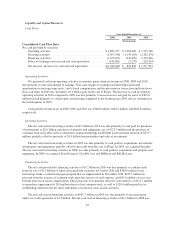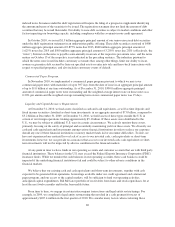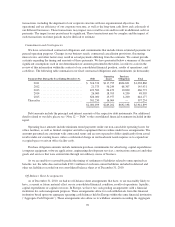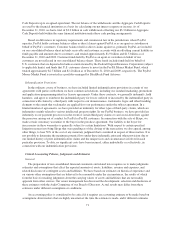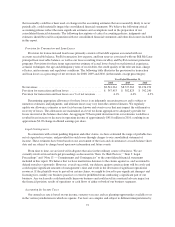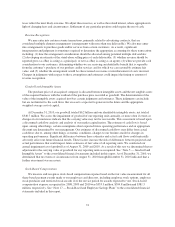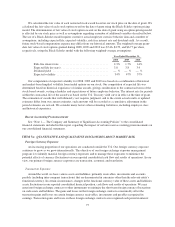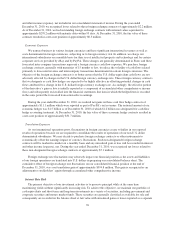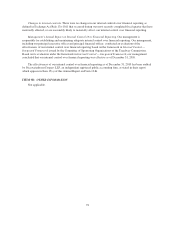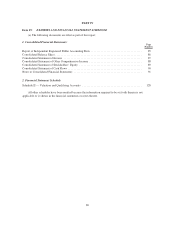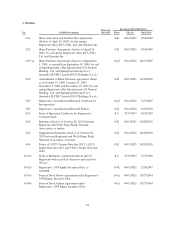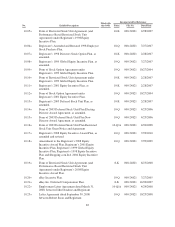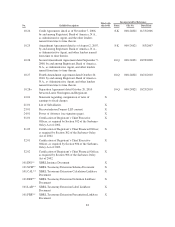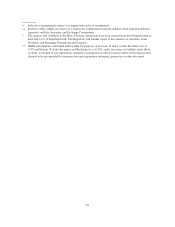eBay 2010 Annual Report Download - page 80
Download and view the complete annual report
Please find page 80 of the 2010 eBay annual report below. You can navigate through the pages in the report by either clicking on the pages listed below, or by using the keyword search tool below to find specific information within the annual report.
We calculated the fair value of each restricted stock award based on our stock price on the date of grant. We
calculated the fair value of each stock option award on the date of grant using the Black-Scholes option pricing
model. The determination of fair value of stock option awards on the date of grant using an option-pricing model
is affected by our stock price as well as assumptions regarding a number of additional variables described below.
The use of a Black-Scholes model requires extensive actual employee exercise behavior data and a number of
assumptions, including expected life, expected volatility, risk-free interest rate and dividend yield. As a result,
future stock-based compensation expense may differ from our historical amounts. The weighted-average grant-
date fair value of stock options granted during 2008, 2009 and 2010 was $7.46, $4.59, and $6.77 per share,
respectively, using the Black-Scholes model with the following weighted-average assumptions:
Year Ended December 31,
2008 2009 2010
Risk-free interest rate .................................. 2.3% 1.7% 1.4%
Expected life (in years) ................................. 3.8 3.8 3.4
Dividend yield ....................................... — % — % — %
Expected volatility .................................... 34% 47% 37%
Our computation of expected volatility for 2008, 2009 and 2010 was based on a combination of historical
and market-based implied volatility from traded options on our stock. Our computation of expected life was
determined based on historical experience of similar awards, giving consideration to the contractual terms of the
stock-based awards, vesting schedules and expectations of future employee behavior. The interest rate for periods
within the contractual life of the award was based on the U.S. Treasury yield curve in effect at the time of grant.
The estimation of awards that will ultimately vest requires judgment, and to the extent actual results or updated
estimates differ from our current estimates, such amounts will be recorded as a cumulative adjustment in the
period estimates are revised. We consider many factors when estimating forfeitures, including employee class
and historical experience.
Recent Accounting Pronouncements
See “Note 1 — The Company and Summary of Significant Accounting Policies” to the consolidated
financial statements included in this report, regarding the impact of certain recent accounting pronouncements on
our consolidated financial statements.
ITEM 7A: QUANTITATIVE AND QUALITATIVE DISCLOSURES ABOUT MARKET RISK
Foreign Currency Exposure
An increasing proportion of our operations are conducted outside the U.S. Our foreign currency exposure
continues to grow as we grow internationally. The objective of our foreign exchange exposure management
program is to identify material foreign currency exposures and to manage these exposures to minimize the
potential effects of currency fluctuations on our reported consolidated cash flow and results of operations. In our
view, our primary foreign currency exposures are transaction, economic and translation.
Transaction Exposure
Around the world, we have various assets and liabilities, primarily receivables, investments and accounts
payable (including inter-company transactions) that are denominated in currencies other than the relevant entity’s
functional currency. In certain circumstances, changes in the functional currency value of these assets and liabilities
create fluctuations in our reported consolidated financial position, cash flows and results of operations. We may
enter into foreign exchange contracts or other instruments to minimize the short-term foreign currency fluctuations
on such assets and liabilities. The gains and losses on the foreign exchange contracts economically offset the
transaction gains and losses on certain foreign currency receivables, investments and payables recognized in
earnings. Transaction gains and losses on these foreign exchange contracts are recognized each period in interest
75




